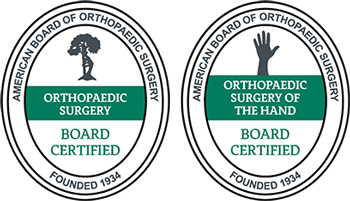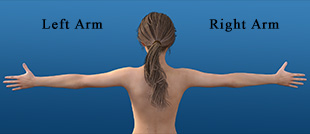5 Ways Desk Jobs Have Contributed To Wrist Pain

Recent history has shown that the desk job has dominated the workplace. With this modern establishment, however, everyday aches and pains have accompanied it. If you suffer from nagging joints, particularly wrists, you are not alone. Our hands and wrists are an essential facet of our bodies since we use them for nearly every task, accentuated by the current office job.
Your wrist pain may have appeared suddenly or gradually over time. An overwhelming amount of Americans work a sitting job, which forces our bodies to stay sedentary for the more significant part of the day–which adds to the majority of our lives. This static lifestyle leads to achy wrists and may lead to an unhealthy lifestyle.
Below you will find several ways desk jobs have contributed to wrist pain.
-
Extended hours
The world has drifted away from the head of the household leaving for work while the wife stays behind to take care of the home and kids. There is a relatively long commute to and from work in today’s society, which leads to a more extended time for your hands to be typing, lifting objects, or holding onto the steering wheel. These extended hours can lead to stiff joints because although the office job is done, there are still responsibilities at home. Over the last decade, commutes have become lengthier, which leaves less time for you to have dinner, take care of yourself, and prepare for the next day without exerting yourself to exhaustion.
-
Prolonged sitting
With these extended hours spent sitting, it has become easy to remain sedentary. A sedentary lifestyle affects the entire body, including the wrist and other joints from resting the wrists on the keyboard or the edge of the desk. The human body is meant to move frequently to prevent stiffening. For many, a typical workday starts with a long commute, at least eight hours in the office, a long commute home, then remaining sitting for dinner and watching Netflix. Taking short breaks throughout the day for a quick walk, stretching, or a workout can provide significant relief to your joints and body.
-
Bad posture
It is easy to slip into a hunchback position while working a desk job due to the work’s monotony. This poor posture slumps the shoulders, forcing your wrists into an unnatural position. Soon enough, this odd position feels normal, although your wrists are likely in the same place for weeks on end. Additionally, once the wrist pain begins, you may find yourself adjusting your posture to another position that is harmful to your body and affects your wrists. It is vital to maintain a good posture because not only will it help your achy wrists. It will alleviate any shoulder or back pain that you may have attributed to your poor posture.
-
Typing
The majority of desk jobs require an extensive amount of typing. Typing is a repetitive motion that is nearly impossible to rearrange the body to perform efficiently. It a critical portion of several jobs as well, so it is unsurprising that it contributes to wrist pain. Typing has almost replaced writing on paper by hand, which also adds to wrist pain because it is repetitive. Writing by hand may be worse for your joints than typing due to the hand’s unique individual positioning. Merely taking a break every hour to massage your wrists or performing wrist circles may alleviate your pain quickly.
-
Poor ergonomics
Desks, monitors, and office equipment are not one size fits all. The desk setup you have will likely not work for another employee. Without properly adjusting your monitor and keyboard, you may begin experiencing wrist pain due to the equipment’s oblique positioning. Keyboards can be flat or elevated, which vastly changes the angle of your hands. Poor ergonomics can lead to carpal tunnel syndrome, tendonitis, tennis elbow, and low back pain, which will only be detrimental to your overall health. Modifying your office chair, posture, and the monitor can ease your pain and make for a more productive workday.
Conclusion
Many people suffer from achy joints and wrist pain and may not realize that their job could be the culprit. The human body has evolved throughout history, and with this evolution came new problems. Wrist pain can be detrimental in general, but much more so if your wrists are an integral part of your career. Extended hours in the workplace and a longer commute leads to prolonged sitting. This leads to bad posture, which can lead to many other health issues since it is easy to slip into a slumped position while working these long hours. Repetitive movements such as typing over a raised keyboard can force your wrists into an acute angle that can trigger carpal tunnel syndrome, tendonitis, and other issues.
Wrist pain does not always stem from a sudden injury, such as a fall or car accident. It can begin at the very place you spend most of your time in–your place of work. Due to the repetitive nature of many workplace tasks, the pain may creep in gradually over the years in your hands, fingers, and joints, which will likely invite other health issues.
Keeping yourself fresh and nimble can keep these pains away or alleviate the problem. It’s a good idea to set reminders on your phone to stand and stretch a few times a day and take a brisk walk if you are able. The fresh air is an excellent change of pace from the monotony and fluorescent lighting of the workplace.
Properly adjusting your office chair, monitor, and workspace setup will also make a difference in your joint pain. Having equipment that is accurate to your individual needs will improve your posture, making typing and other workplace tasks easier and nearly pain-free. Even if joint pain is inevitable, it is manageable.

























